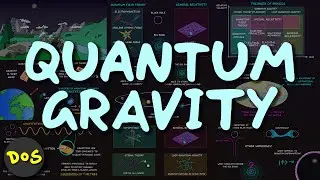The Quantum Wavefunction Explained
Fundamentally everything is made of particles and these particles are are described by a quantum wavefunction. But what actually is it, and is it even real? Support this channel: / domainofscience and https://store.dftba.com/collections/d...
Here I explain what they are and show a visualization of what they look like, and show how they are similar to many other waves we are familiar with.
Overall the wavefunction is a mathematical tool which keeps track of all of the properties of a quantum particle, and explains our observations of the probabilistic nature of where particles appear when we do experiments on them. From the wavefunction we can calculate all of the observables like position, momentum, energy or spin, by applying mathematical operators on it. So in quantum physics, the wavefunction encodes all of the information about the quantum system, and valid wavefunctions are solutions to the Schrodinger equation which I covered in my last video which you can watch here • The Schrödinger Equation Explained in...
#quantum #physics #DoS
-- Posters ---
DFTBA Store: https://store.dftba.com/collections/d...
RedBubble Store: https://www.redbubble.com/people/Domi...
I have also made posters available for educational use which you can find here: https://www.flickr.com/photos/9586967...
- Some Awesome People --
And many thanks to my $10 supporters on Patreon, you are awesome!
Bob Milano
Alex Polo
Eric Epstein
Kevin Delaney
Mark Pickenheim
noggieB
Raj Duphare
Reggie Fourmyle
Sandy Toye
Sebastian
Terrence Masson
Join the gang and help support me produce free and high quality science content:
/ domainofscience
-- My Science Books ---
I also write science books for kids called Professor Astro Cat. You can see them all here:
http://profastrocat.com
-- Follow me around the internet --
http://dominicwalliman.com
/ dominicwalliman
/ dominicwalliman
-- Credits --
Music, art, and everything else by Dominic Walliman































